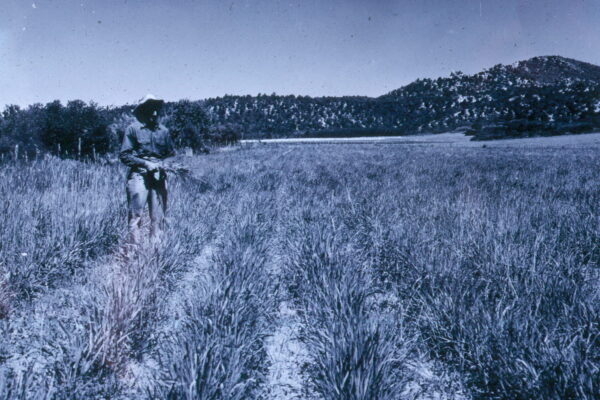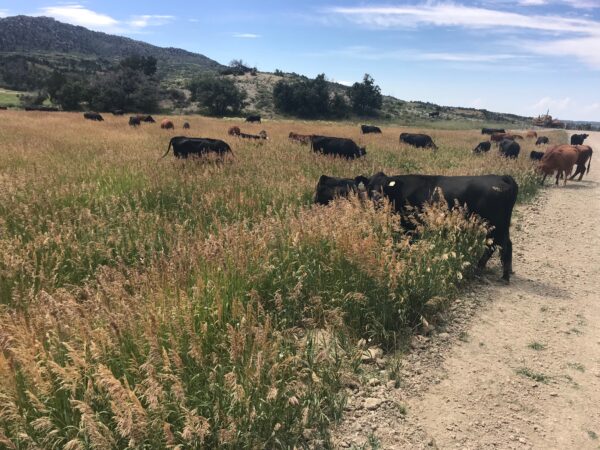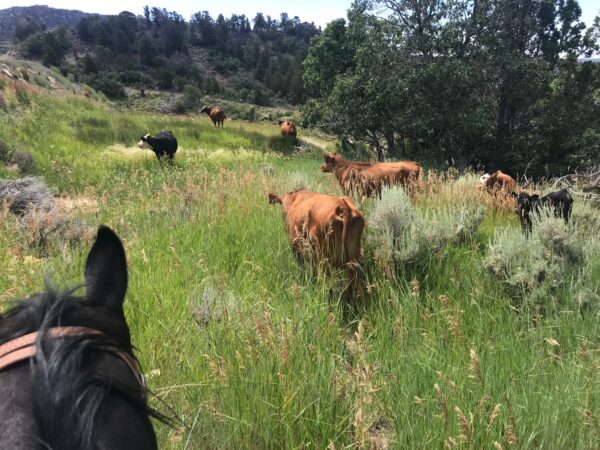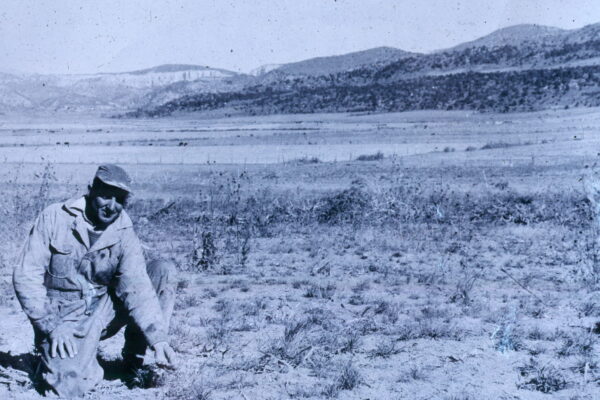“Learning on the Heaton Ranch” is part 3 in an 8-part series focused on explaining a document called “A Manifesto for Local Stewardship.” The manifesto, which made its rounds in summer of 2022, was published in The Byway’s most recent September paper.
I grew up on the Heaton Ranch in Alton, Utah. I didn’t realize it until I was older, but 100% of our food, clothing, home, cars, entertainment came from harvesting solar energy. Our farm and ranch were a solar farm before “solar farms” were cool. We collected solar energy in the form of plants that provided forage for sheep and cattle grazing.
My family’s livelihood depended upon this harvest of solar energy and we learned over time that taking care of this solar energy harvesting process put food on the table and provided the necessities of life. We also learned that proper grazing practices, good livestock management, rangeland restoration and water development were essential to maintaining this “solar energy harvesting” system.
My great-grandfather, Jonathan Heaton, farmed and ranched in Southern Utah and Northern Arizona from the late 1800s into the early 1900s. Since, his land and grazing permits have been passed down through generations and several of his descendants still graze cattle on these same lands.

Four of his grandsons — my grandfather and his three brothers — started accumulating permits and livestock in the 1940s-60s and formed an agriculture business called Heaton Livestock Company which comprises public land permits and private land holdings in Garfield and Kane counties, Utah, and Mohave County, Arizona.
During that time, the foundation of the business was mainly sheep production. The brothers used the lush grazing of the high elevations around Alton to summer their livestock, and the dormant rangelands of the Arizona Strip for winter grazing. This combination of summer and winter grazing provides ideal conditions for livestock production. During the 1960s and 1970s, the sheep herds were converted to beef cattle and today the company mainly grazes beef cattle.

In the 1930s and 1940s, much of Southern Utah and Northern Arizona was overgrazed by livestock, mainly sheep. But over time, we learned better. In the 1950s and 1960s my family acknowledged the overgrazing issues and began to address them. First, they identified overgrazed and eroded landscapes, and then, they implemented restoration and management practices to correct the problems.
Another important thing they learned was that water development for livestock was critical in our arid landscapes. Ofttimes, there is abundant feed but because of limited water distribution, overgrazing would occur around the stock watering locations while abundant forage would exist in the outskirts of the pastures.
Over the last 50-70 years, thousands of acres have been restored to productive, diverse rangeland on the Heaton Ranch. The improvements include miles of water pipelines installed, miles of fence lines maintained, 50-plus livestock watering sites improved, and miles of riparian habitat enhanced.
These milestones have been because of partnerships and good working relationships with our neighboring ranchers, the Natural Resource Conservation Service personnel, BLM and Forest Service Range Cons and Managers, Soil Conservation District personnel and Utah Grazing Improvement Program Technicians. We also acknowledge the support and funding provided by county, state and federal government which helps to offset the high cost of restoration projects.
The Heaton Ranch hopes that continued improvements in their “solar energy harvesting” system will ensure sustainable livestock production for the next generation and indefinitely.
– by Kevin Heaton

Feature image caption: Kevin’s grandfather, Gail Heaton, in the mid 1960s highlighting a project where he cleared pinion/juniper trees and other shrub species, then reseeded the site with improved forage varieties. His efforts resulted in stabilized soils, abundant forage for livestock and wildlife for 50 plus years. These sites are still productive today. Courtesy of Kevin Heaton.

